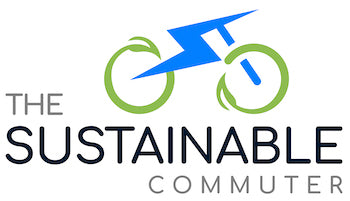
Transforming Transportation for a Sustainable Future
Share
The Global Transportation Sector
The global transportation sector is a significant contributor to greenhouse gas emissions, air pollution, and climate change. There is an urgent need to make transportation more and reduce its environmental impact. This article will explore strategies for transforming transportation into a sustainable system and the benefits it brings for our planet and future generations.
Electric Vehicles: Leading the Charge
One of the most promising solutions for transportation is the widespread adoption of electric vehicles (EVs). EVs are becoming increasingly popular due to their low emissions and efficiency. They produce zero tailpipe emissions, reducing air pollution and improving air quality in urban areas. In addition, EVs are more energy-efficient than internal combustion engines, making them a greener alternative.
Governments can play a crucial role in promoting the adoption of EVs. They can incentivize the purchase of electric vehicles through tax benefits and subsidies, making them more affordable for consumers. Additionally, governments can invest in infrastructure development, such as building more charging stations, to alleviate range anxiety and encourage more people to switch to electric vehicles.
Companies like Tesla Motors, Inc. are leading the way in developing more advanced and efficient electric vehicles. Tesla's Model S and Model 3 have become highly popular due to their long range, fast charging capabilities, and sleek design. Other automakers, such as Nissan with their Leaf model and Chevrolet with their Bolt EV, are also investing in electric vehicle technology.
Public Transportation: A Sustainable Solution
Public transportation is another important part of making transportation more. Investing in public transit systems, such as buses, light rail, and subways, can reduce emissions, improve air quality, and promote economic growth. Public transportation can also reduce the need for personal vehicles and alleviate traffic congestion, resulting in less fossil fuel consumption and lower emissions.
Governments and local authorities should prioritize the development and expansion of public transit systems. This includes increasing the frequency and coverage of bus routes, investing in light rail and subway networks, and implementing smart technologies to improve efficiency and reduce waiting times. By making public transportation more accessible, affordable, and convenient, more people will be encouraged to use it as their primary mode of transportation.
Cycling and Walking: Sustainable and Healthy Options
Cycling and walking are two of the most efficient and forms of transportation. They require no fuel, emit no emissions, and provide numerous health benefits. Encouraging more people to cycle and walk for their daily commute can significantly reduce congestion and improve air quality in cities.
Cities should invest in cycling and pedestrian infrastructure to make it safer and more comfortable for people to choose active transportation. This includes building bike lanes, sidewalks, and shared-use paths, as well as providing secure bike parking facilities. Additionally, cities can implement traffic calming measures, such as reducing speed limits and creating pedestrian-friendly zones, to prioritize the safety and convenience of cyclists and pedestrians.
Renewable Energy: Powering the Future Sustainably
Powering transportation with renewable energy sources, such as solar, wind, and hydropower, is crucial for achieving a future. Renewable energy sources can significantly reduce our reliance on fossil fuels and reduce greenhouse gas emissions from transportation.
Solar energy can be used to power electric vehicles through solar charging stations, which harness the sun's energy to charge EV batteries. Wind energy can also be harnessed to generate electricity for electric vehicles and other transportation methods. Hydropower can be used to power electric trains and trams, providing an efficient and mode of transportation.
Innovative Technologies for Sustainable Freight Transportation
Freight transportation has a significant environmental impact, so it is important to find ways to make it more. Organizations like UPS are investing in innovative technologies and solutions to reduce emissions and improve efficiency in freight transportation.
Electric delivery trucks are one such solution. By replacing diesel-powered trucks with electric vehicles, companies can significantly reduce their carbon footprint and air pollution. Additionally, companies can explore other alternatives, such as using biofuels or hydrogen fuel cells in their delivery fleets.
Urban Planning for Sustainable Transportation
Urban planning plays a crucial role in promoting transportation. Designing smart cities with sustainable transportation options can reduce reliance on personal vehicles and create more livable communities.
Walkable neighborhoods are an essential aspect of urban planning. By designing neighborhoods with easy access to amenities, schools, and workplaces, more people will be encouraged to walk or cycle for their daily needs. Mixed-use development, which combines residential, commercial, and recreational spaces in close proximity, can reduce the need for long-distance travel and promote a more sustainable lifestyle.
Public transit-oriented development is another strategy for urban planning. By locating residential and commercial areas near public transit hubs, more people will have convenient access to public transportation, reducing the need for private vehicles.
Sustainable Aviation: Reducing Environmental Impact
The aviation industry is a significant contributor to greenhouse gas emissions and climate change. However, airlines are taking steps to reduce their environmental impact and make air travel more.
Airlines are investing in more fuel-efficient aircraft, such as Boeing's 787 Dreamliner and Airbus' A350, which consume less fuel and emit fewer emissions compared to older models. Additionally, airlines are exploring the use of aviation fuels, such as biofuels made from waste materials, to reduce their carbon footprint.
Conclusion
Transforming transportation into a system is crucial for mitigating climate change, improving air quality, and creating a greener future. Strategies such as promoting electric vehicles, investing in public transportation, encouraging cycling and walking, harnessing renewable energy sources, adopting innovative technologies for freight transportation, and implementing sustainable urban planning can all contribute to a more sustainable transportation system. By taking these steps, we can ensure a healthier planet for future generations.
You might also like:
Hybrid and Electric Cars: The Future of Sustainable Transportation?
Exploring Hybrid Vehicles: How They Work, Their Benefits, and Why They Matter for the Environment
